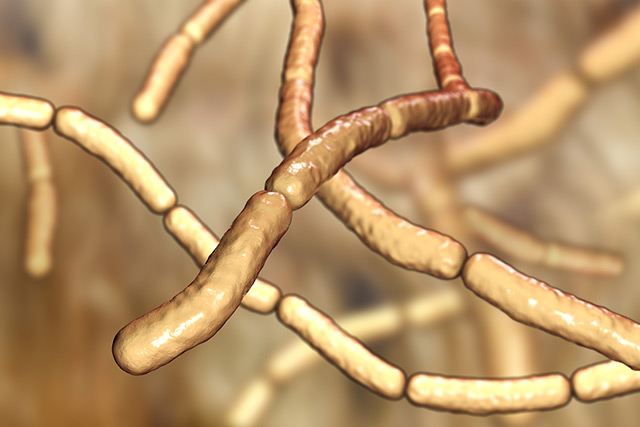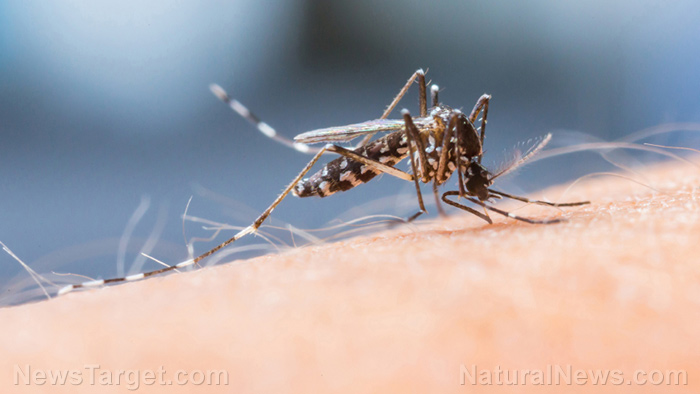Learn more about the Asian longhorned tick, a pest now spreading in the U.S.
12/08/2018 / By Zoey Sky

U.S. officials are advising the public to take precautions against the longhorned tick (Haemaphysalis longicornis), a tick species native to East Asia that has now spread to the U.S. According to reports, the Asian tick has shown up in several areas along the East Coast.
The longhorned tick was first identified in the U.S. in 2017. The New Jersey Department of Agriculture sighted the Asian tick on a sheep in New Jersey.
To date, the tick has been seen in six other states, namely:
- Arkansas
- North Carolina
- New York
- Pennsylvania (the location of the most recent sighting)
- Virginia
- West Virginia
Dr. Rachel Levine, the secretary of health for the Pennsylvania Department of Health, released a statement last July 31. In her statement, Levine stressed the importance of tick prevention in light of the discovery of the longhorn tick in America.
Facts about the longhorned tick
- Female longhorned ticks, which can reproduce asexually, lay thousands of eggs. This is made possible through a process called parthenogenesis. Once female ticks have fed, they can lay at least 2,000 eggs. This is enough to establish a tick population in a new location, warned the U.S. Department of Agriculture (USDA).
- Longhorned ticks can suck so much blood that they may cause anemia, or death, in livestock. Once about 2,000 tick eggs have hatched, the ticks may cause severe infestations in livestock. According to the New Jersey Department of Agriculture, tick infestations can cause weakness, anemia, or even death in animals.
- Once fully engorged with blood, adult longhorned ticks can grow to the size of a pea. Normally, longhorned ticks are only as small as a poppy seed. Aside from livestock, the ticks can also feed on birds, humans, pets, small mammals, and other animals.
- Scientists still don’t know how they reached the U.S. Experts are still trying to find out how the longhorned tick spread to the country. The USDA posits that the ticks entered the U.S. via horses, humans, livestock, or pets. The longhorned tick can also be found in Australia, New Zealand, and some Pacific islands.
- The health threat to humans remains unknown. In other countries, the longhorned tick can transmit diseases to both humans and livestock. The USDA reports that this includes bacterial infections (e.g., babesiosis, ehrlichiosis, rickettsiosis, and theileriosis) and some viral diseases. On August 9, The New York Times reported that the longhorned tick can spread a virus that causes severe fever with thrombocytopenia syndrome (SFTS). Experts warn that SFTS may be deadly. (Related: New hardy tick infesting New Jersey expected to migrate westward, experts warn the public to be extra careful.)
The Pennsylvania Department of Health said that more research is needed to confirm if the longhorned ticks in the country can spread diseases. To date, the ticks examined in the U.S. haven’t been found to carry any infectious pathogens.
Protecting yourself from tick bites
Take precautions before going outdoors to avoid getting bitten by longhorned ticks:
- Apply natural insect repellent.
- Wear long sleeves and pants.
- Avoid areas that may house ticks. Ticks can be found in brushy, grassy, or wooded areas. Ticks can also be found on animals.
- Avoid contact with ticks. When walking outdoors, don’t wander in brushy, wooded areas with high grass and leaf litter.
- Always walk in the middle of trails.
You can learn more about harmful ticks and how to prevent tick bites at Health.news.
Sources include:
Tagged Under: Asian tick, Diseases, Haemaphysalis longicornis, infestation, insects, longhorned tick, parasites, prevention, Public Health, severe fever with thrombocytopenia syndrome, tick bites, tick-borne diseases



















